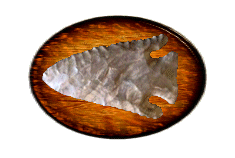

HISTORY OF THE APACHE

~CHIEF~
|


There are six main Apache groups, each of which speaks a different dialect: (1) the Kiowa-Apache living near the Kiowa on the Southern Plains, (2) the Lipan of eastern New Mexico and western Texas, (3) the Jicarilla of northern New Mexico and southern Colorado, (4) the Mescalero of central New Mexico, (5) the Chiricahua of southern Arizona and southwestern New Mexico, and (6) the Western Apache (or Coyotero) of central Arizona. In historic times, various subgroups formed with their own tribal identities. The Chiricahua were subdivided into the Chiricahua, Mimbreno, Mogollon (a name also applied to a prehistoric culture), and Warm Springs (Ojo Caliente), and the Western Apache included the San Carlos, White Mountain, Cibecue, and Tonto.Early Apache were a nomadic people, ranging over a wide area of what is now the United States; some groups roamed into Mexico as well. They were primarily hunter-gatherers, with some bands hunting buffalo (American bison) and some practicing limited farming. For centuries they were fierce warriors, adept in wilderness survival, who carried out raids on those who encroached on their territory.The first intruders were the Spanish, who drove northward into Apache territory in the late 1500s. The Spanish penetration disrupted Apache trade connections with neighboring tribes. When New Mexico became a Spanish colony in 1598, hostilities increased between Spaniards and Apache. An influx of Comanche into traditional Apache territory in the early 1700s forced the Lipan and other Apache to move south of their main food source, the buffalo. These displaced Apache began raiding Pueblo Indians and non-Indian settlers for food. Apache raids on settlers and migrants crossing their lands continued into the period of American westward expansion and the United States acquisition of New Mexico in 1848. Some Apache bands and the United States military authorities engaged in fierce wars until the Apache were pacified and moved to reservations. The Mescalero were subdued by 1868 and placed on a reservation at Fort Sumner in eastern New Mexico with the Navajo. The Western Apache and their Yavapai allies were subdued in the U.S. military’s Tonto Basin Campaign of 1872-1873. The Chiricahua chief Cochise signed a treaty with the U.S. government in 1872 and moved with his band to an Apache reservation in Arizona. But Apache resistance continued under the Mimbreno chief Victorio from 1877 to 1880. The last band of Apache raiders, active in ensuing years under the Chiricahua chief Geronimo, was hunted down in 1886 and sent first to Florida, then to Alabama, and finally to the Oklahoma Territory, where they settled among the Kiowa-Apache!!



